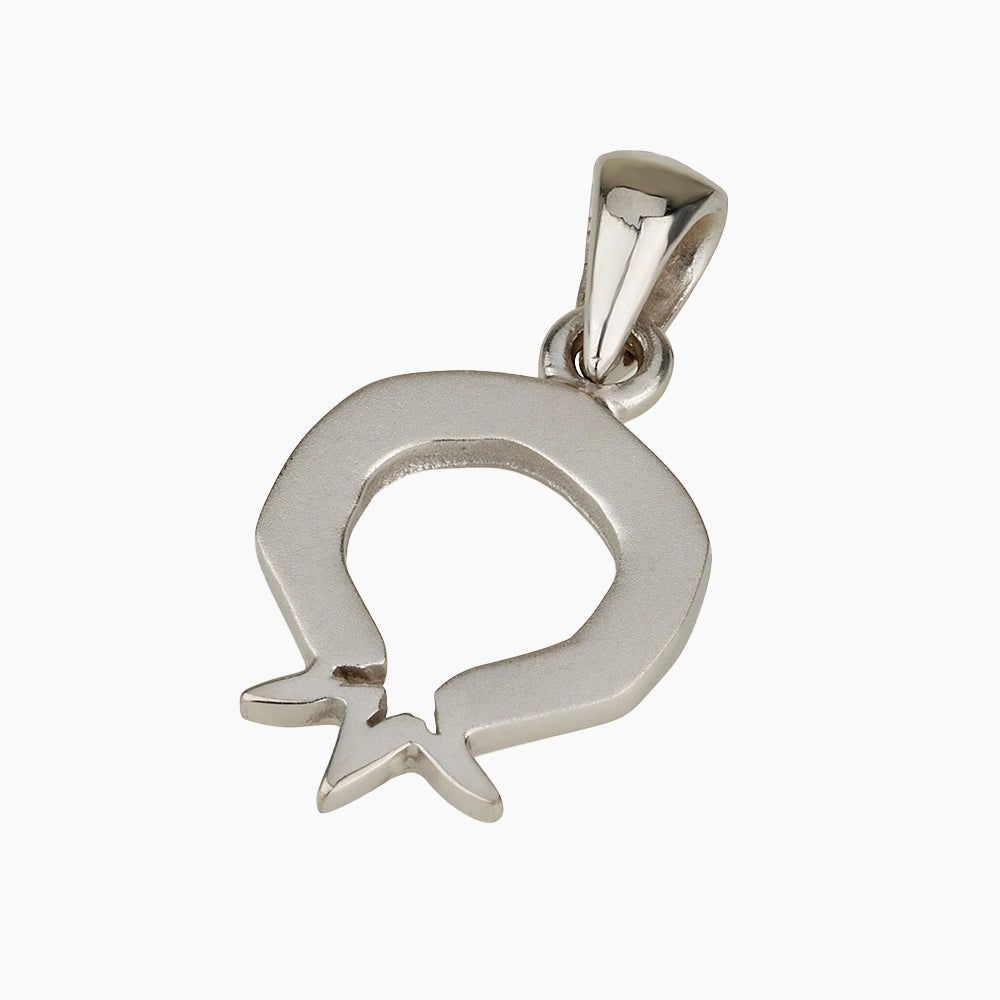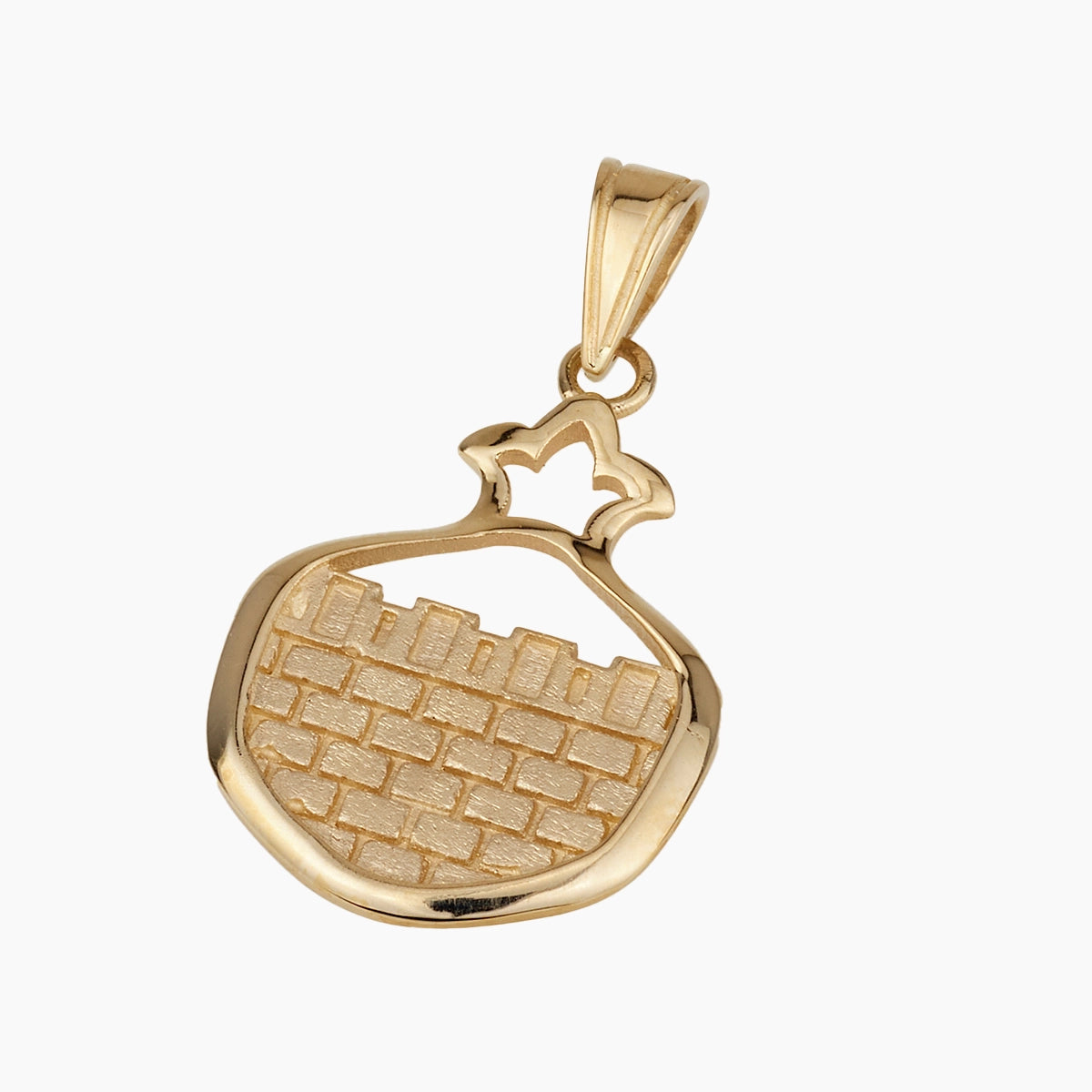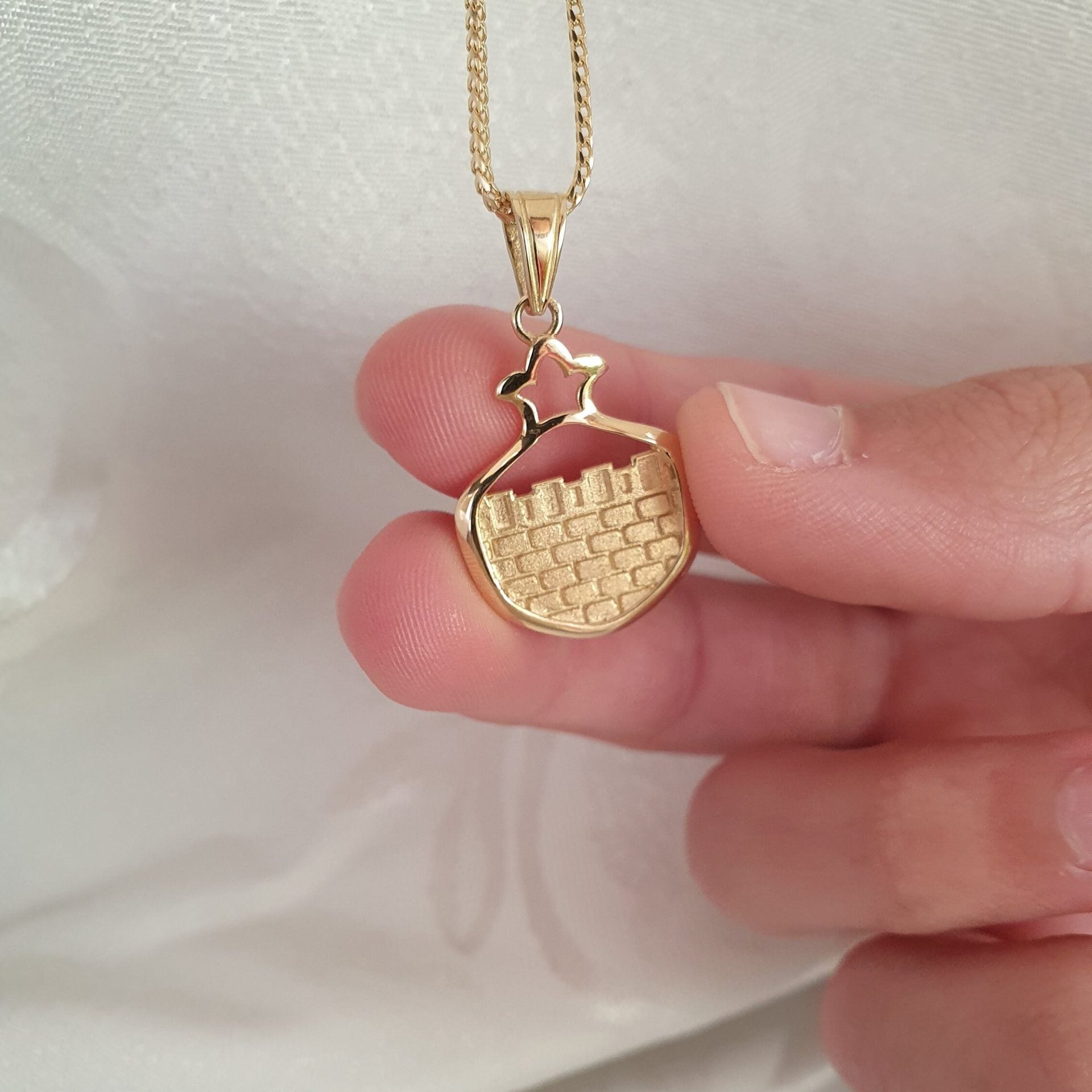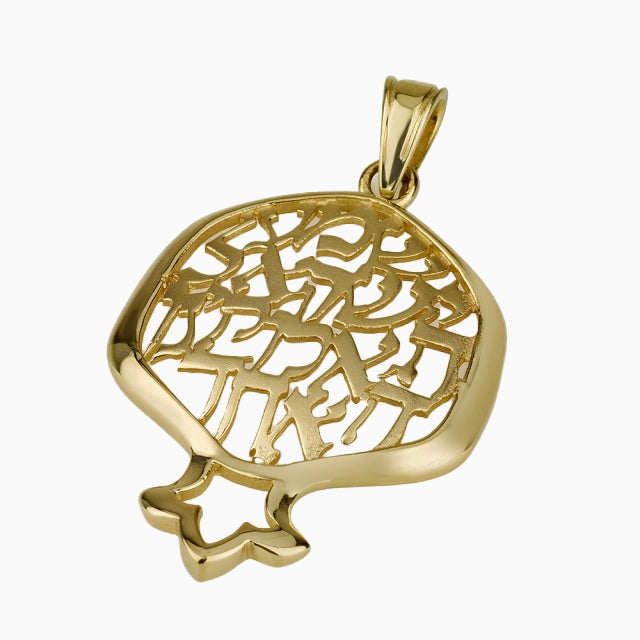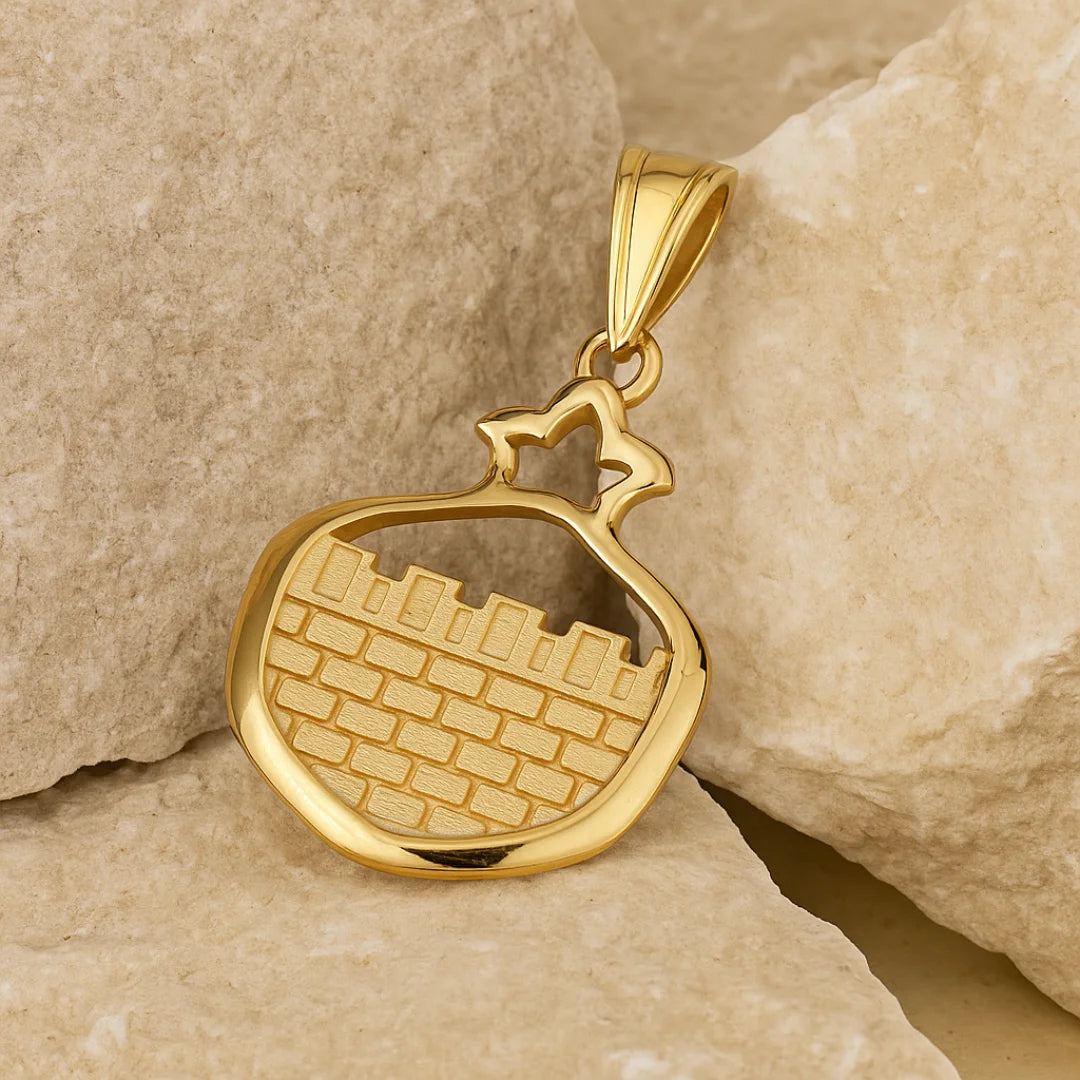
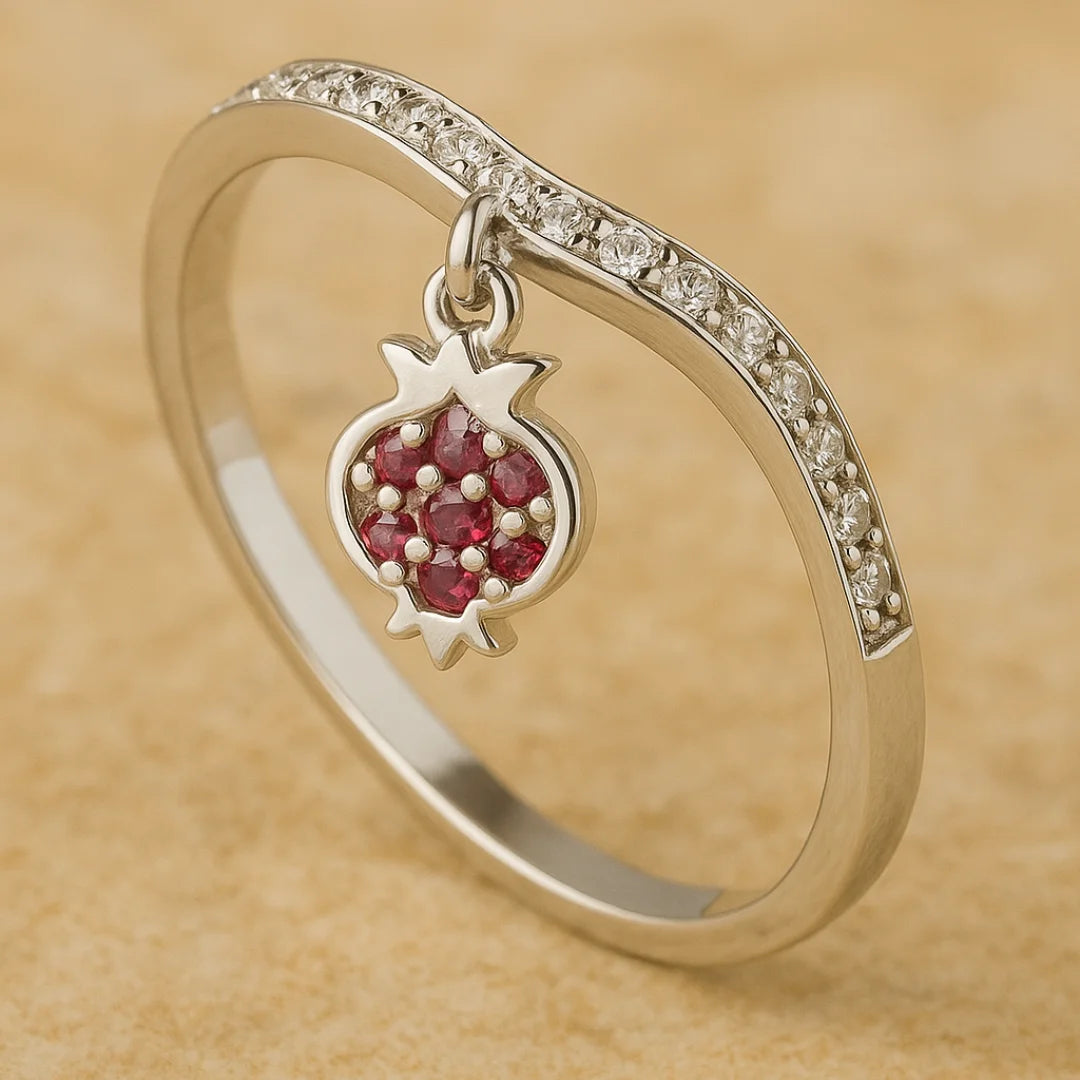
Pomegranate Jewelry
Pomegranate in Judaism: The 613 Seeds of Abundance & Fertility
Few symbols in Jewish existence are more abundant and multilayered than the pomegranate. This fruit, so ancient that it predates modern visualizations of fruit, which exploded with hundreds of seeds, has for centuries been a symbol of blessing, righteousness and God's abundance. In Judaism, it is not simply a fruit, but a living metaphor for spiritual plenitude and the wonder of creation.
One of the "Seven Species" of Israel
The pomegranate is featured on the Shivat HaMinim - the Seven Species of the Torah symbolizing the Land of Israel's fertility: wheat, barley, grapes, figs, pomegranates, olives and dates. All the species manifest a specific aspect of divine blessing, but the pomegranate is especially celebrated for its sumptuous beauty and rich spiritual connotation.
A symbol of blessing in the Land of Milk and Honey
In times past, the pomegranate was a symbol of wealth and fertility. Along the borders of ancient Israel's gardens and fields, it shone, a guarantee that the very ground was blessed. To this day, eating pomegranate seeds on Rosh Hashanah remains a cherished custom, hoping to have as many good acts in the coming year as there are seeds.
The Origins and History of the Pomegranate
The pomegranate is one of the world's oldest cultivated fruits, and one of its longest-lived. Its history is closely bound up with that of Israel and of the Jews.
Where the pomegranate grows - from ancient Judea to today
Native to sections of ancient Persia and the Land of Israel, pomegranates have been fruitful in Jewish culture for over 3,000 years. Archaeological findings in Israel reveal pomegranate carvings, decorations and remains from biblical times. To this day, the fruit still ripens in abundance through Israel's fields and gardens, connecting the modern state to its past.
Pomegranates in Jewish life and the Mediterranean world
Across the Mediterranean, pomegranate was seen as a fruit of life and regeneration. Although it was cherished by many cultures, from Greek to Persian, in Judaism it gained extra religious significance. Its round shape symbolized wholeness, its crown-like top meant grandness and its seeds symbolized commandments and good deeds which decorate a righteous existence.
Pomegranate Symbolism in Judaism
The symbolism of the pomegranate is powerful in Jewish thought. In the Torah to the rabbinic tradition, it is interpreted as a symbol for fruitfulness, purity and relationship with God.
The 613 seeds and the 613 mitzvot
Jewish legend teaches us that a pomegranate contains 613 seeds, one for each of the 613 mitzvot, or commandments, in the Torah. The number is symbolic rather than literal, and yet it describes to perfection the character of the fruit: as the pomegranate is filled with infinite numbers of seeds, so too is the Jewish life filled with infinite ways of doing goodness.
In the Bible and later, the pomegranate was a symbol of the richness of life. Its opened-up seeds symbolized fertility, growth and blessing, both spiritual and material. It was used as a theme in weddings and celebrations, symbolizing love, prosperity and hope for generations to come.
The pomegranate as a symbol of righteousness
The Talmud compares the righteous person with the pomegranate - "even the empty among you are full of good deeds like the pomegranate." The symbol teaches Jews that goodness and potential are embedded in every soul, just waiting to be revealed, just like seeds are concealed behind the thick skin of the pomegranate.
The Pomegranate in the Bible and Jewish Texts
The pomegranate occurs in the Bible, both as an earth fruit but also as a symbol of the sacred intricately integrated into worship and tradition.
Mentions in the Torah and the Prophets
The Torah also states that the Promised Land was "a land of wheat and barley, of vines and fig trees and pomegranates" (Deuteronomy 8:8). In the Song of Songs, the fruit is praised for beauty and sweetness, a poetic symbol of love, purity and religious bond.
The pomegranate on the robe of the High Priest
High Priest's robe in the Book of Exodus had embroidered pomegranates of purple, blue and scarlet yarns. Tiny golden bells dangled between them, creating together a sanctified harmony as he entered the Temple. The pomegranate here represented sanctity, piety and the abundance of good works introduced into the service of God.
Pomegranate decorations in Solomon’s Temple
King Solomon's Temple was resplendently decorated with carved pomegranates on pillars and gateways (I Kings 7:18-20). They were not touches that contributed embellishments merely; they testified to the fertility of life achieved by living in terms of Godly wisdom.


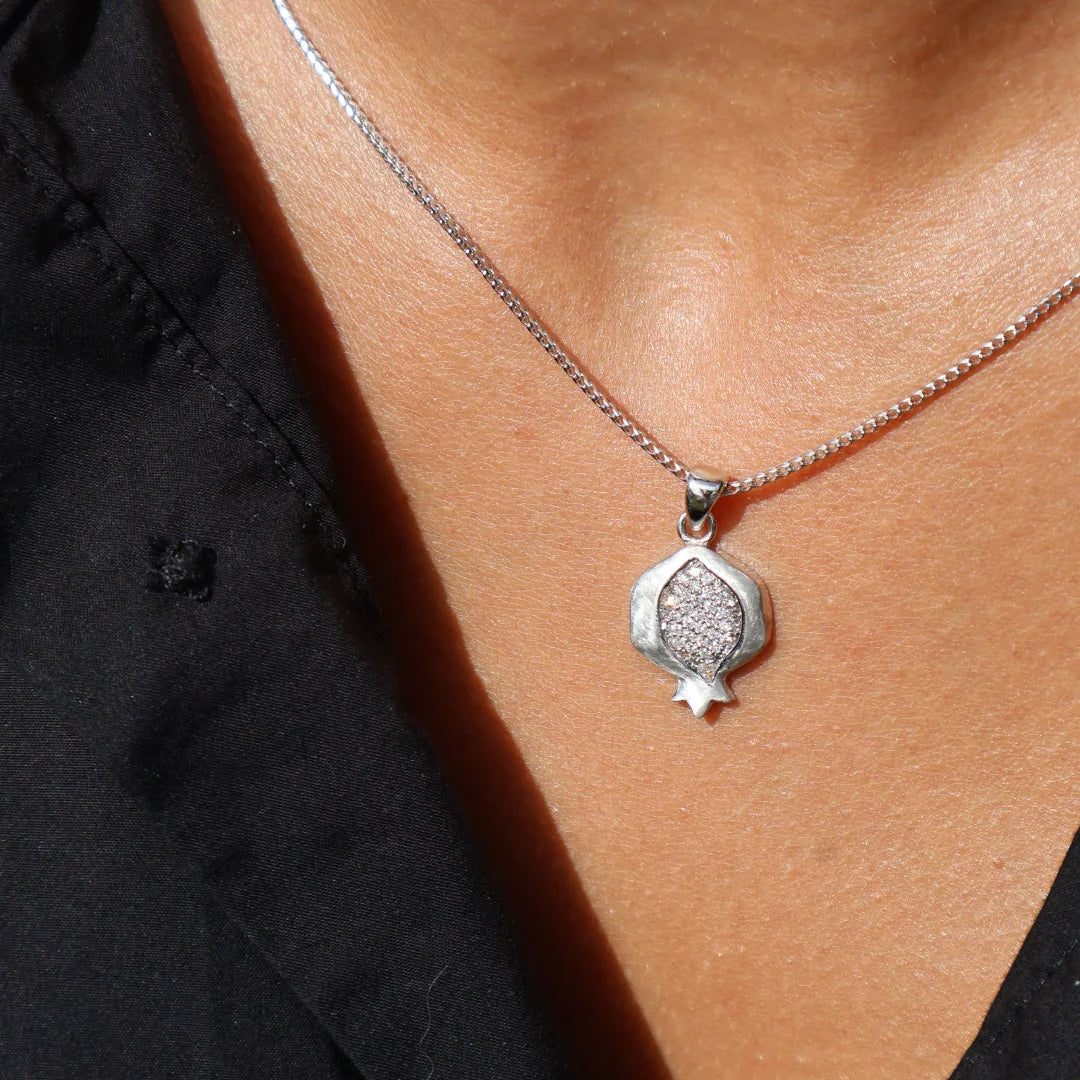
The Pomegranate in Art, Coins and Judaica
The symbolism and the beauty of the pomegranate have been integral to Jewish ritual life and art for thousands of years. From coins in ancient times to Judaica today, it is among the most enduring visual representations of Judaism.
Ancient Judean coins and national symbolism
Archaeologists discovered pomegranate carvings on Judean coins from the Second Temple period. The coins not only represented the land's fertility but also the fruit's religious significance. To date, the pomegranate still appears in Israeli art and design, like official symbols and synagogue decor - as a symbol of continuity, blessing, and identity.
The pomegranate as a timeless motif in Jewish art
Jewish painters have, throughout the centuries, drawn inspiration from the pomegranate. From synagogue carvings to illuminated manuscripts, its rounded form and clustered seeds have been used to represent wholeness, religion and divine knowledge. The fruit's deep color and single crown make it a popular symbol for Judaic art, symbolizing holiness and beauty both.
Pomegranates in modern Judaica and ceremonial design
Today, the pomegranate continues to decorate Judaica items, ranging from kiddush cups and mezuzot to challah covers and tallitot. Israeli designers in most cases reinterpret the symbol with a modern twist, sustaining its biblical meaning in art that decorates homes and synagogues across the globe.
Pomegranate Symbolism in Literature and Culture
The application of the pomegranate extends beyond religious tradition. In literature and poetry, in art, it has been employed to symbolize the cycle of life, love and rebirth. In Jewish poetry and literature, the pomegranate is typically linked with renewal, the ever-present ability of life and belief to bloom again. Its deep crimson seeds have been symbolized as symbols of life and love, and its entire round shape as a symbol of wholeness and deity. The Song of Songs, that most lyrical book of the Hebrew Bible, compares the beauty of the beloved to the blooming pomegranate. Poets following Jews, starting from medieval Spain to today's Israel, have continued to use the fruit as a symbol for commitment, beauty and soul's abundance.
The Pomegranate in Jewelry and Modern Design
Today, the pomegranate has discovered a new form in fashion, artwork, and jewelry, but it possesses the same age-old message of faith and blessing.
Pomegranate jewelry as a symbol of blessing
Pomegranate jewelry can possess aesthetic appeal with deep meaning. Crown or fruit form pendants, earrings and rings are reminders at all times of abundance and inner abundance. They are often given as a token of presents for new beginnings, life, prosperity and love.
Gold, silver and gemstone interpretations
Designers produce pomegranate jewelry in many different shapes, from solid silver and gold to gemstone-studded models that echo the seed's luster. Rubies, garnets and red enamel are employed to replicate the natural color of the fruit so that the ancient sign becomes wearable art. From Jerusalem workshops to modern galleries across the globe, artists continue to reinterpret the pomegranate. Minimalist or baroque, traditional or modern, all works owe allegiance to the same ancient faith, that the pomegranate is a vehicle of blessing, filled with life, acts of goodness and divine plenty.
Featured collection
Pomegranate Jewelry
14K white Gold Pomegranate Pendant
14K Gold Jerusalem Well Pomegranate Pendant
14K Gold Pomegranate with Shema Israel Pendant
14K White Gold Pomegranate & Shema Israel Pendant
Eternal 14K Rose Gold Bracelet with Eye and Pomegranate Charms
Eternal 14k gold Jewish Bracelet
Heritage 14K White Gold Bracelet with Eye and Pomegranate Charms
14k Gold Jewish Bracelet With Opal Stone & Hamsa
14K Gold Jewish Bracelet with Charms
Heritage 14k gold Jewish Bracelet
Frequently Asked Questions
In Jewish symbolism, the pomegranate represents abundance, righteousness and God's blessing. Its many seeds are said to stand for the 613 commandments of the Torah and remind Jews of their divine calling and the importance of good deeds.
Pomegranate is biblically the symbol of fertility, prosperity and holiness. It was used in adorning the garments of the High Priest and Jerusalem's Temple, representing the fullness of life in God's covenant.
At Rosh Hashanah, it is the tradition for Jews to eat pomegranate seeds saying the blessing, "May our merits be like the seeds of a pomegranate." It is a good wish for an abundant year, goodness and mitzvot.
Before eating a pomegranate, Jews say the standard blessing over fruit: "Baruch atah Adonai, Eloheinu Melech ha'olam, borei pri ha'etz." ("Blessed are You, Lord our God, King of the universe, who causes the fruit of the tree to grow.")












